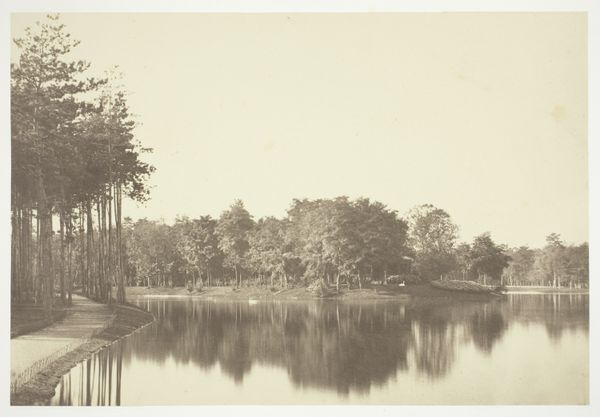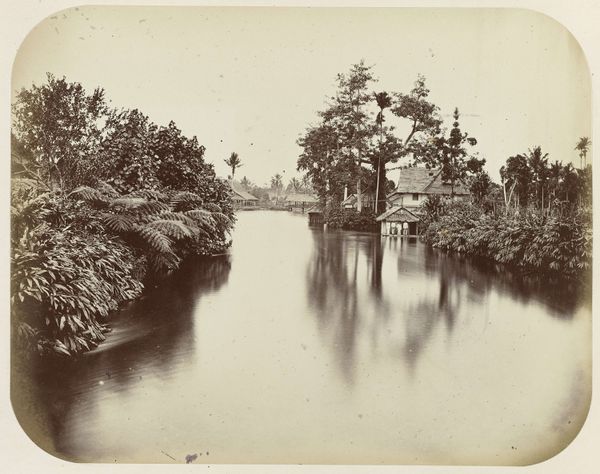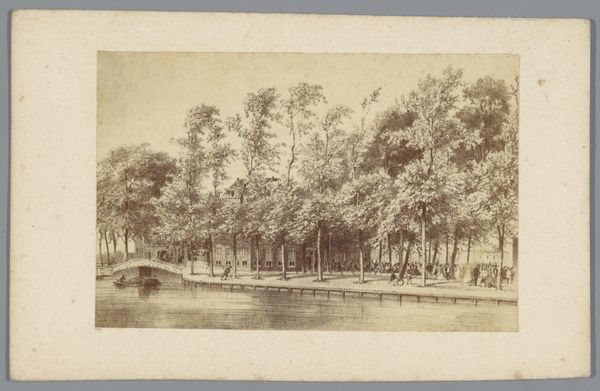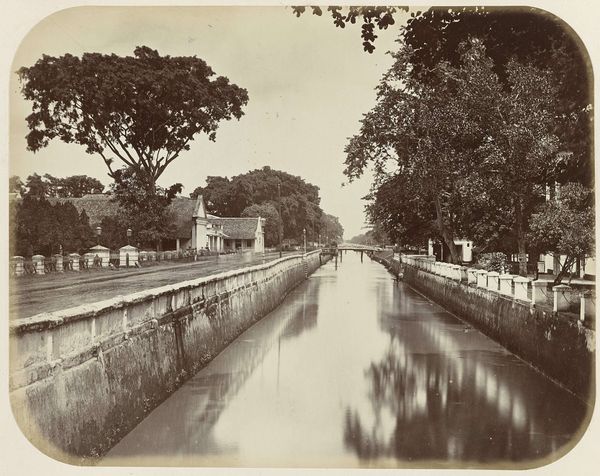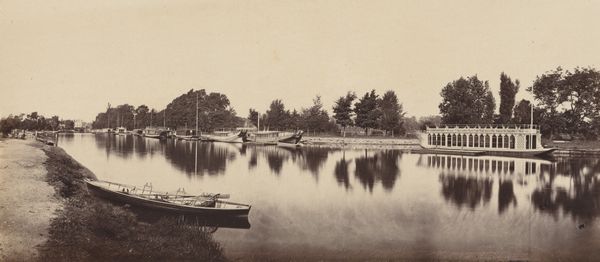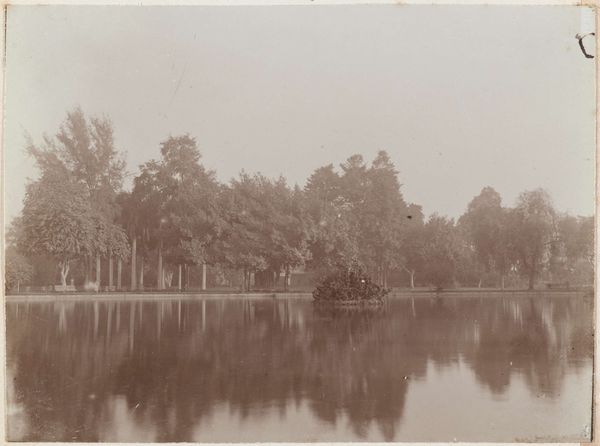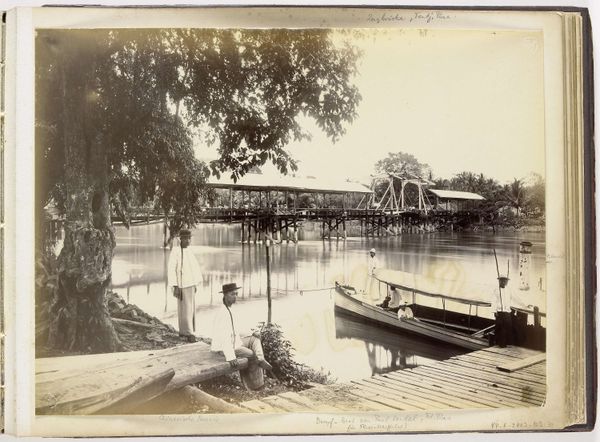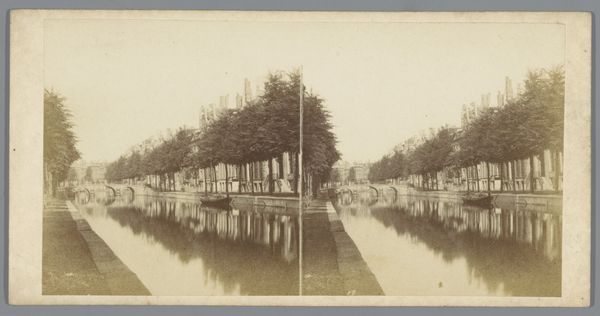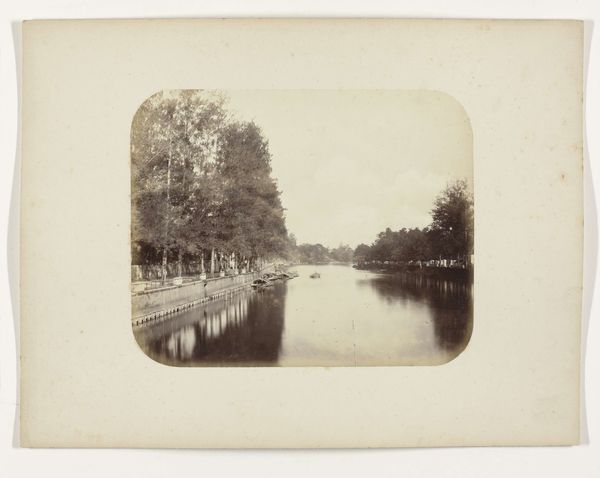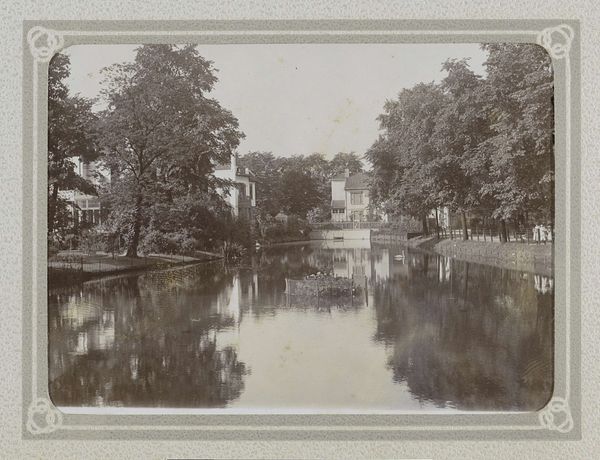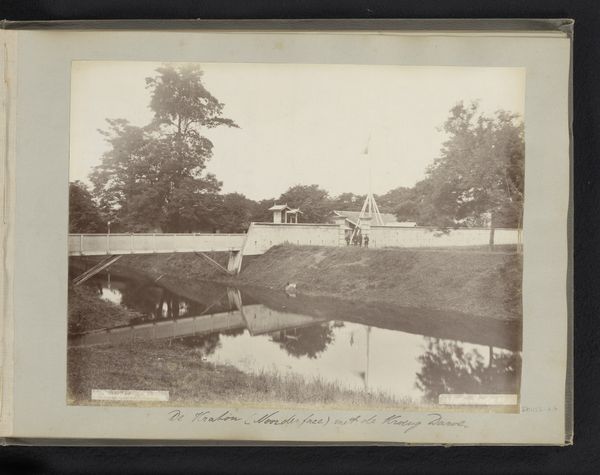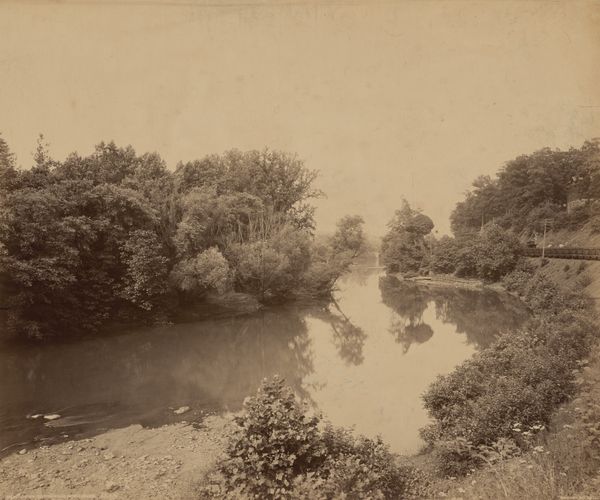
plein-air, photography
#
pictorialism
#
impressionism
#
plein-air
#
landscape
#
photography
#
park
Dimensions: height 106 mm, width 166 mm
Copyright: Rijks Museum: Open Domain
Curator: It's striking how serene and almost dreamlike this photograph is. Editor: Agreed. Jannis Jacobus van Melle created this image, titled "Volkspark te Bergen op Zoom," sometime between 1880 and 1900. We see the park's lake, a delicate bridge arching across the water, and people enjoying their leisure time. It speaks of a specific moment in time, the dawn of modernity and the burgeoning of public parks. Curator: The subdued tones are evocative, lending the work a sense of timelessness. Parks in general serve as a refuge from daily life, but the formal bridge also suggests that the natural world might also benefit from carefully chosen structure. Editor: Definitely. It's interesting how this photograph encapsulates a bourgeois ideal, marking the construction of a space conceived for shared recreational opportunities while simultaneously implying social divisions. It's imperative to consider who had the resources and access to this park. Did working-class folks enjoy such recreational areas? Probably not. Curator: That's very possible. The image's success hinges on this almost mythological rendering, subtly reinforcing class distinctions within the growing urban experience. We find solace in archetypal visual expressions through symbolic representations and even spatial design. There's an appealingly Romantic feeling in seeing nature placed alongside progress. Editor: Absolutely. Van Melle also invites consideration about the development of a leisure class as distinct from people whose exploitation made its leisured ease and pleasures conceivable. In addition, how has visual representation functioned to legitimize particular regimes of seeing and, thus, feeling and moving through the social space? Curator: Very true. Ultimately, art captures not only what we see, but what we collectively choose to remember. This is what keeps us connected across generations and cultures. Editor: Indeed. It's important that this work and many others spur ongoing dialogues regarding power structures that underpin seemingly neutral notions.
Comments
No comments
Be the first to comment and join the conversation on the ultimate creative platform.
